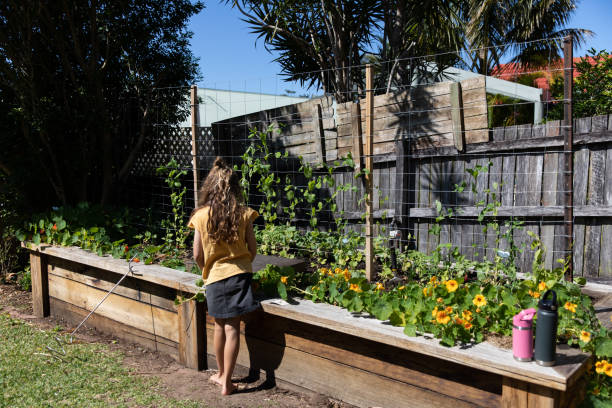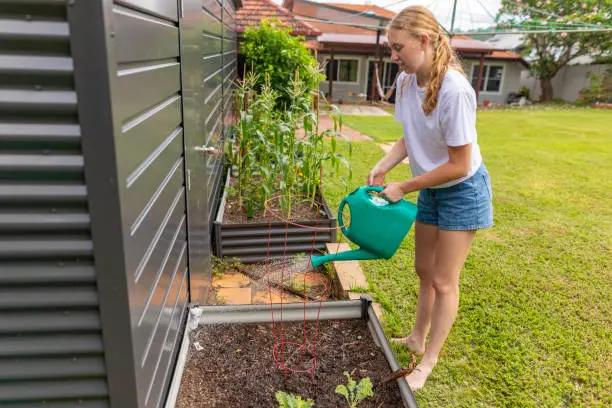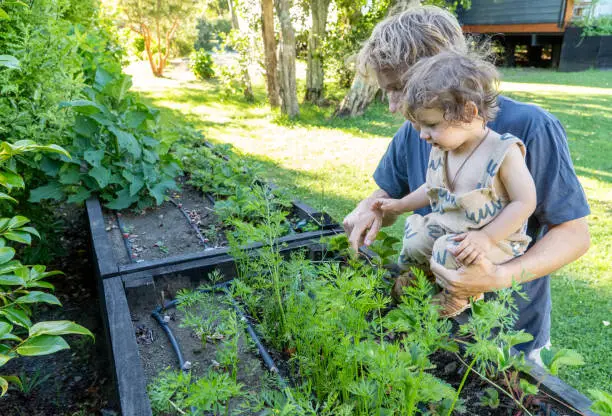Imagine wandering around your lawn and picking fresh tomatoes or earth-dusted carrots. Growing your food and making seasonal dishes is the charm of backyard homesteading. Let’s try some delicious backyard meals.
Spring: Fresh Pea-Mint Soup
Spring is for regeneration and new beginnings. Nothing shouts “fresh” like garden-fresh peas.
Ingredients:
- 2-cup fresh peas
- One sliced tiny onion
- Two minced garlic cloves
- 4-cup vegetable broth
- A handful of fresh mint leaves
- Salt and pepper to taste
- Sour cream (optional)
Instructions:
- Sauté onion and garlic in a large pot till transparent.
- Add peas and broth. Bring to a boil.
- Lower heat and simmer for 10 minutes.
- Add mint leaves.
- Process everything till smooth.
- Sprinkle with salt and pepper.
- For a luxurious touch, serve hot with sour cream.
Peas are sweet and green, making this soup an excellent spring starter.

Summer: Grilled Zucchini and Tomato Salad
Your summer garden is full of zucchini and tomatoes, leaving you wondering what to do.
Ingredients:
- Two medium zucchinis, cut lengthwise
- 4 chopped ripe tomatoes
- Olive oil for grilling
- One handful of torn basil leaves
- Optional feta crumbles
- Salt and pepper to taste
Instructions:
- Oil zucchini slices.
- Grill for 3 minutes per side to get those beautiful char marks.
- Cut grilled zucchini into pieces.
- In a bowl, mix grilled zucchini, tomatoes, basil, feta cheese, salt, and pepper.
- Add more olive oil if needed.
This salad has bright colors and summery flavors.
Fall: Butternut Squash Risotto
Butternut squash risotto is pleasant in cold weather.
Ingredients:
- One peeled, diced butternut squash
- One cup of Arborio rice
- One chopped tiny onion.
- 4 cups heated chicken or veggie broth
- Optional but recommended: 1/2 cup white wine
- Top Parmesan cheese for grating
- Salt and pepper to taste
Instructions:
1. Roast butternut squash cubes for 25 minutes at 400°F until soft.
2. Saute onion in a big pan till tender.
3. Stir in Arborio rice for two minutes until transparent.
4. Add white wine and stir to evaporate.
5. Patiently add warm broth one ladle at a time while swirling until absorbed before adding more.
6. Gently stir in roasted squash cubes once the rice is creamy yet al dente (20 minutes).
7. Before serving, sprinkle Parmesan cheese generously.
Risotto is laborious, but it’s worth it!

Winter: Hearty Kale Stew
Kale stew is excellent for winter’s hearty, warming foods.
Ingredients:
One bunch of cleaned and roughly cut kale
Peel and slice two potatoes.
Drain and rinse one can of cannellini beans.
4 cups chicken/vegetable stock
One finely sliced big carrot
Two finely minced garlic cloves
Instructions:
Cook carrots until softened after sautéing garlic until fragrant.
Add potatoes and stock; boil lower, simmer.
Simmer potatoes till fork-tender, then add kale and simmer for 10 minutes.
To finish, season beans and serve hot.
While rough uncooked, kale stews beautifully—a winter warrior!
That’s it! Simple ingredients grown outside your door make light spring soups and substantial winter stews!
Herb Hoarding: Year-Round Greenery
Have you ever taken a handful of fresh basil from your garden and wished you could preserve it for winter? You’re lucky, pal. Jarring herbs is like preserving summer. Keep those green delicacies at their best with these tried-and-true strategies.
Old-School Drying
Dry first. This approach has been around forever for good reason. It is straightforward and effective. Gather herbs in tiny bunches. Hang them upside down in an excellent, dry location with string. A dark attic or pantry is ideal for them to relax.
Space them well for airflow. Mold shouldn’t crash the party. Crispy herbs for soups or pasta will be ready in two weeks.
Freezing: Freshness Lock
Next, freeze—easy, like Sunday morning pancakes. After washing, pat your herbs dry with paper towels. Chop them up—you decide.
Place chopped herbs on a parchment-lined baking sheet and freeze for an hour or two. Once frozen, put them in zip-lock bags or airtight containers. No one likes herb roulette when making dinner, so label each package.
Another clever approach is freezing herbs in olive oil in ice cube trays. Chop the herbs, put them in the trays, cover with olive oil, and freeze! These cubes are ideal for sautéing vegetables or preparing sauces in hot pots.
Oil Infusion: Flavor Explosion
Infused oils are excellent for cooking or eating. Start with clean, bone-dry glass bottles or jars.
Insert your herb (rosemary and thyme work well) and cover with high-quality olive oil. Keep cold and sealed away from direct sunlight.
If you prefer clear oil, filter out the solids after two weeks of mixing. Leaving herb particles adds character. Pour this liquid gold over salads or dip crusty bread in it.
Herb Butters: Spreadable Joy
Herb butter brightens toast with nature’s wealth! Soften unsalted butter until it’s malleable but not melting like an ice cream cone left out.
Chop any fresh herbs you like (parsley works well). Add these greens to softened butter with garlic powder and salt to taste!
Roll the mixture into a log shape on wax paper, twist the ends tightly to seal the flavors in the cylinder, refrigerate until solid again, then slice and enjoy when culinary inspiration hits next time at the counter.
Sweet and Savory Vinegar & Syrups
Herbal vinegar: Add zest to salads, marinades, and cocktails/desserts. Daring home cooks should try varied ingredients.
Syrups and Vinegar
Herbal vinegar is used in spice salads, marinades, and cocktails. Put your preferred herb—tarragon or basil—in a sterilized container. Cover with high-quality vinegar (apple cider or white wine). Shut tightly and steep for two weeks, shaking occasionally. You can strain the herbs for clear vinegar or leave them in for flavor.
Make herbal syrups for sweetness. Ideal for iced teas, cocktails, and desserts. Mix equal parts water and sugar and boil until dissolved. Add a handful of mint or lavender and simmer for a few minutes. Refrigerate after cooling and straining. Your handmade syrup will sweeten drinks with garden deliciousness for a month.
Recycling Garden Gold Compost Boost
Make nutrient-rich compost from kitchen and yard waste. It’s environmentally friendly and simple. Put a compost bin in the shade. Layer green veggie leftovers and grass clippings with brown leaves and cardboard. Turn it periodically to aerate and keep it wet.
A few months later, dark, crumbly compost will enhance your soil. It boosts garden fertility, making next season’s harvests more abundant. Life’s cycle in your backyard!





Leave a Reply
You must be logged in to post a comment.